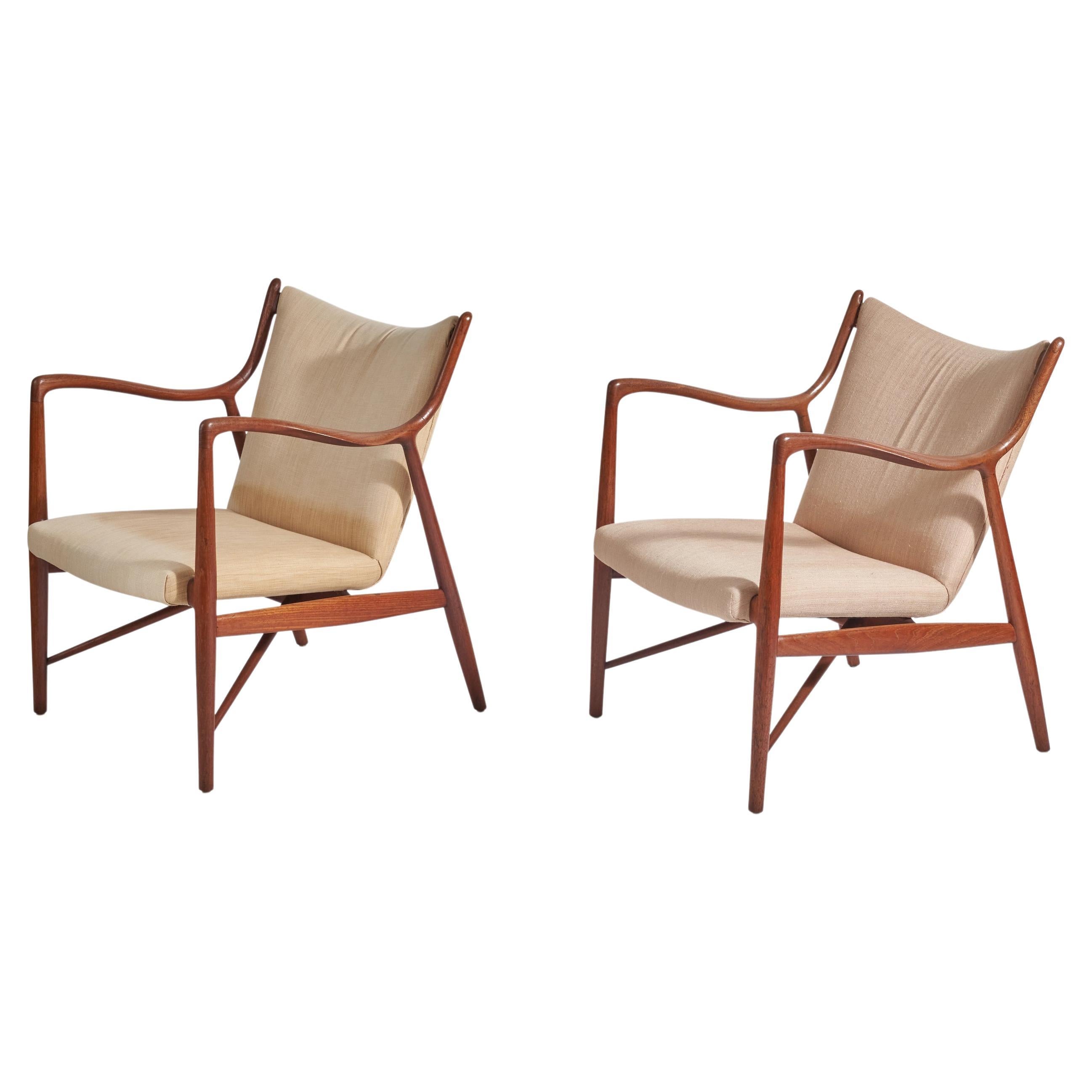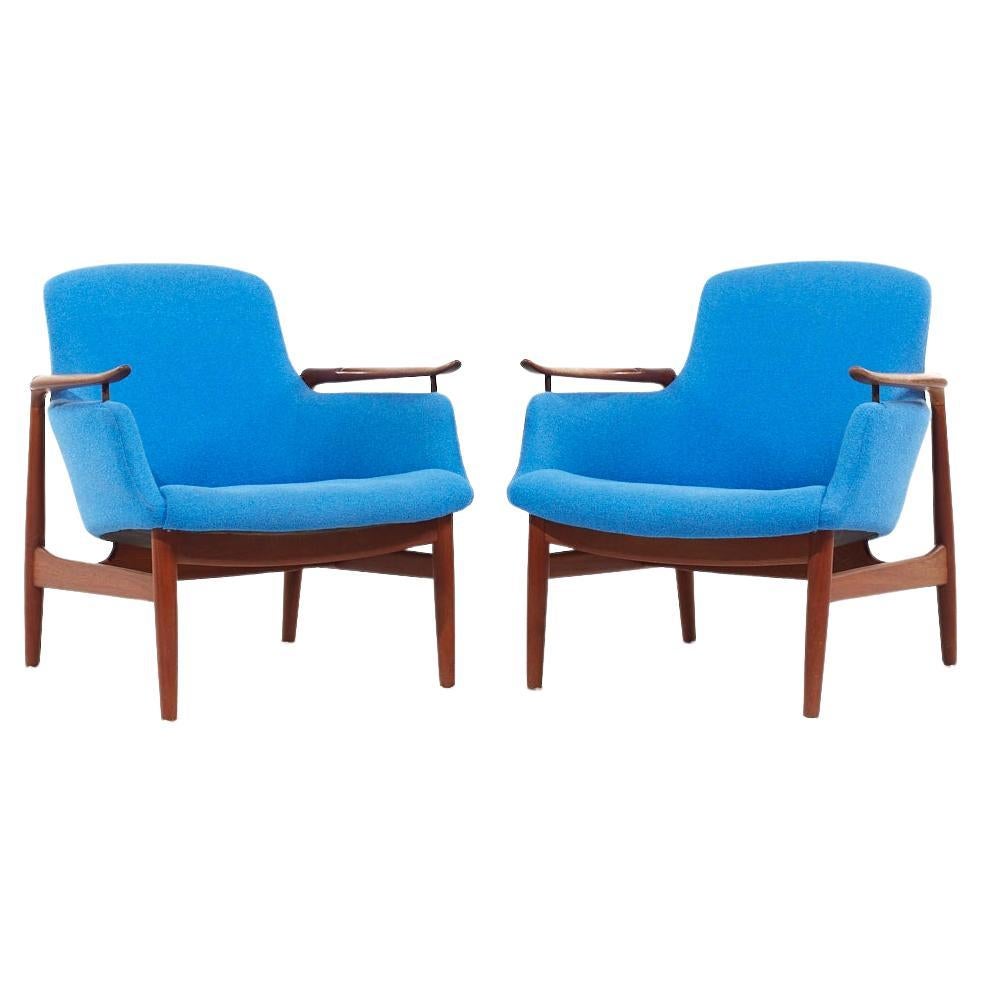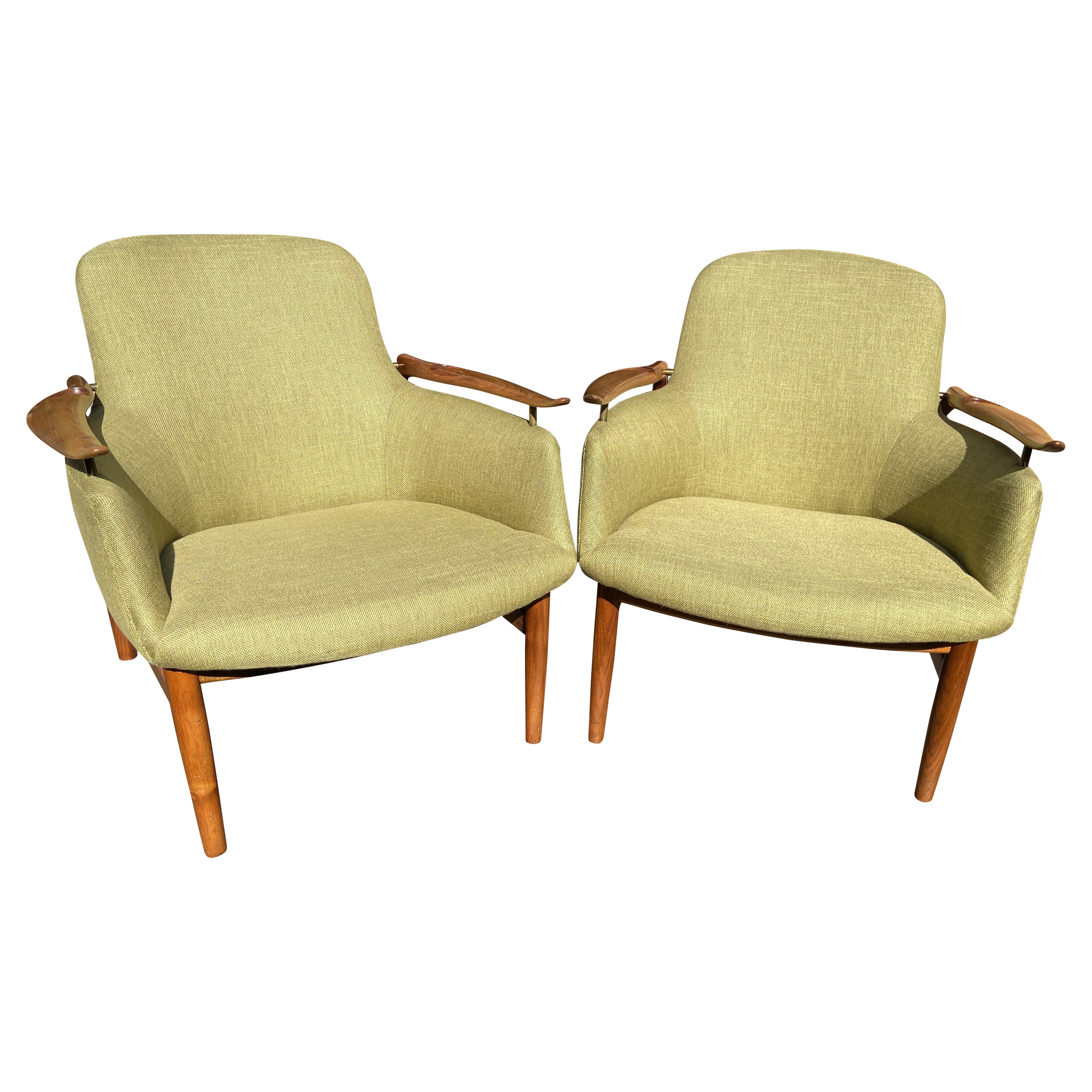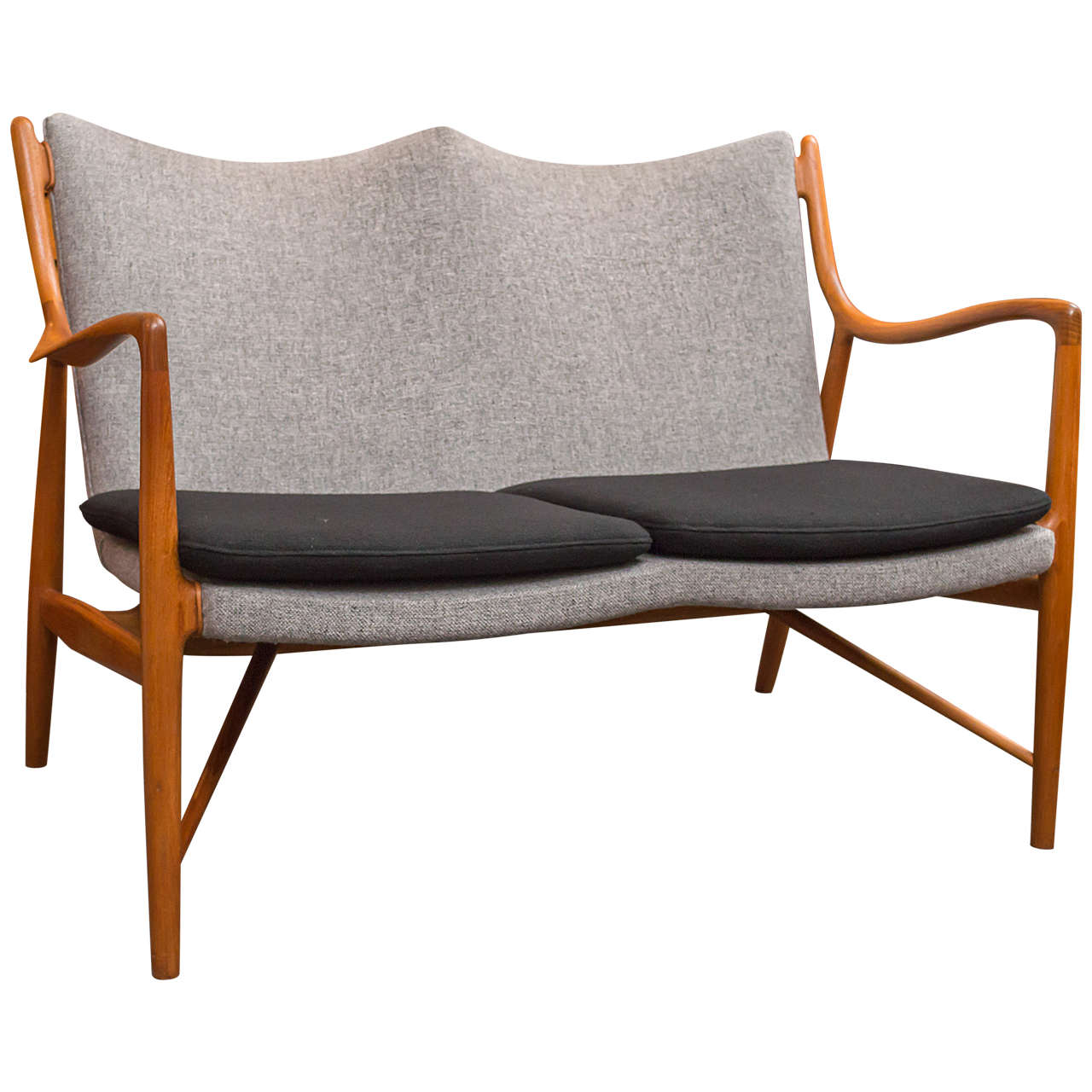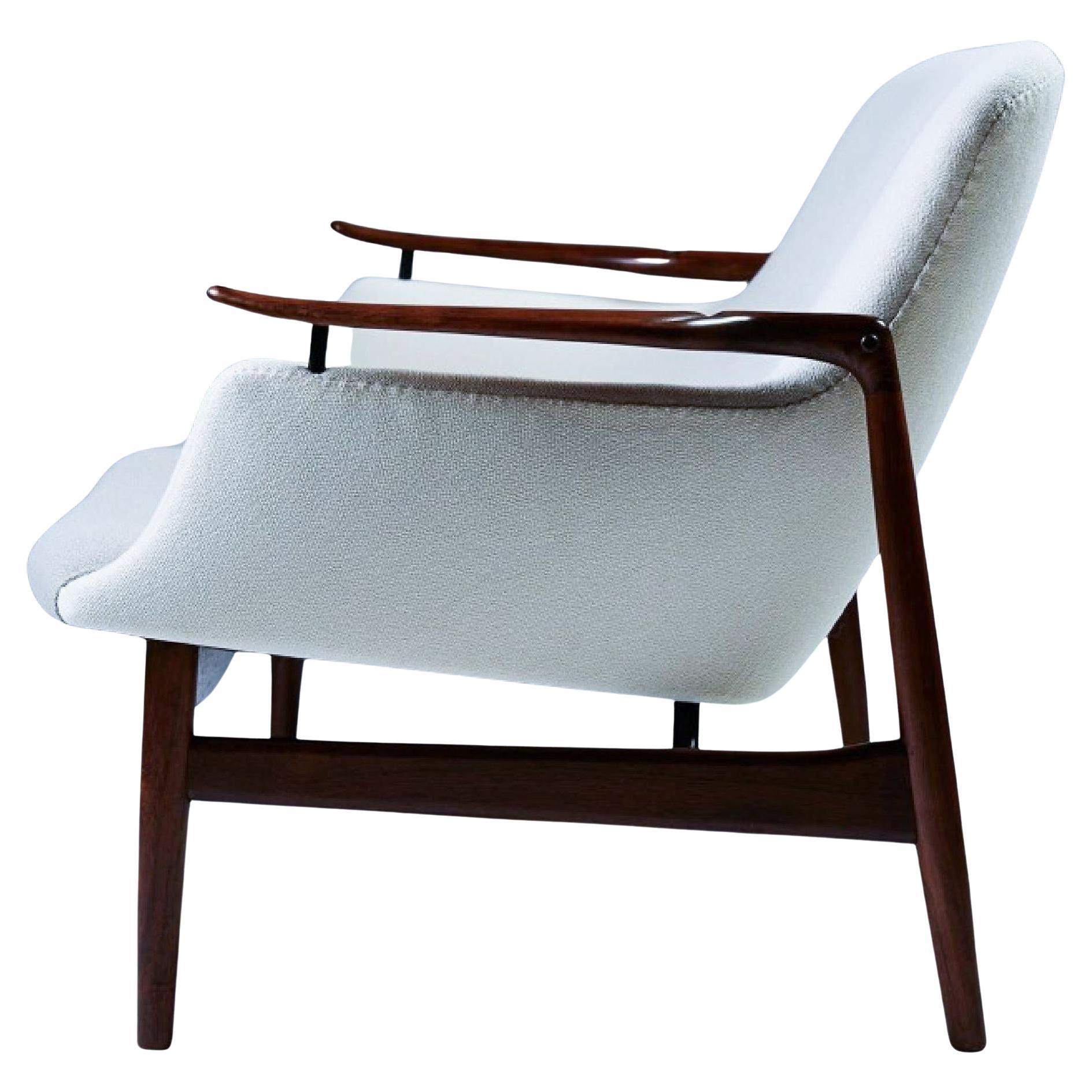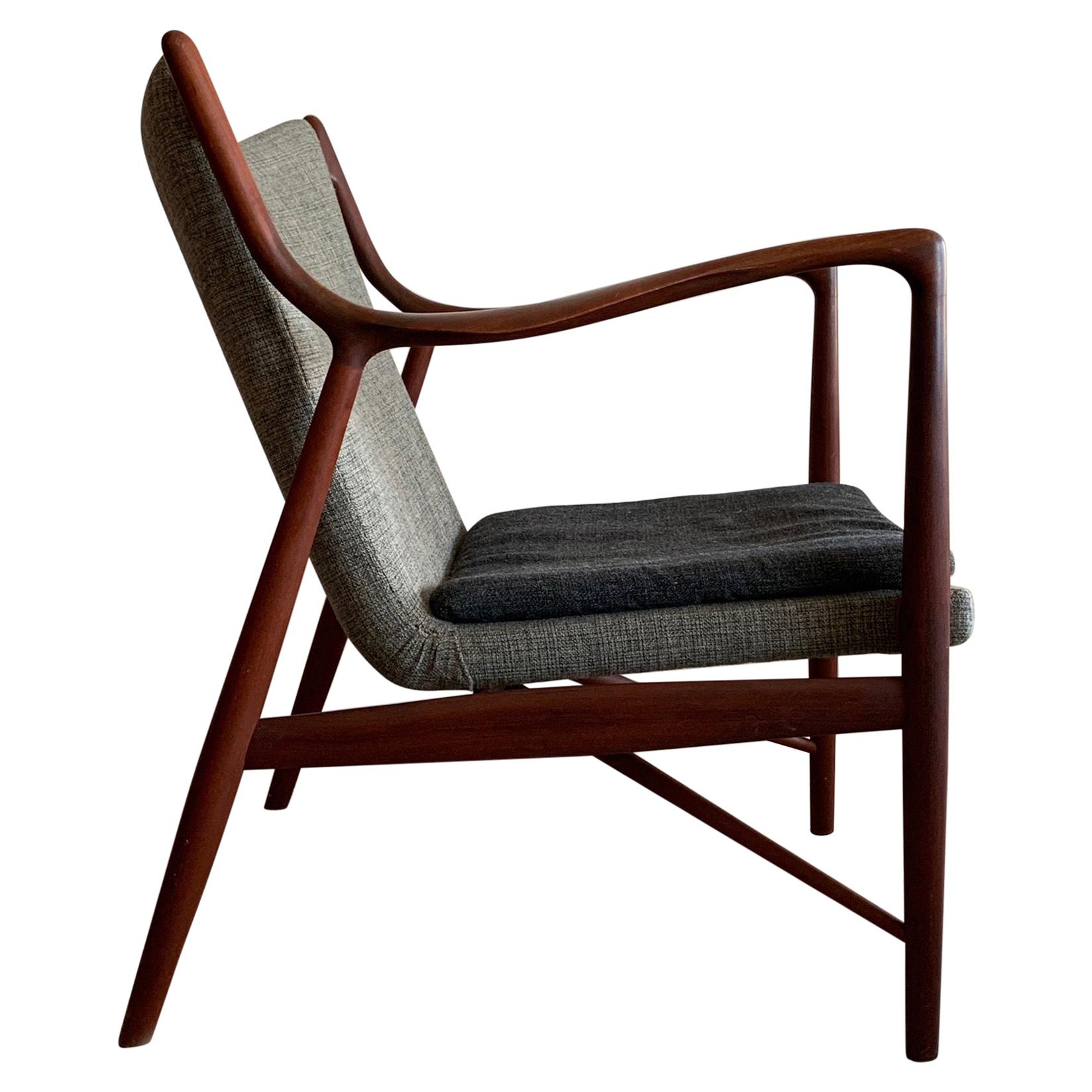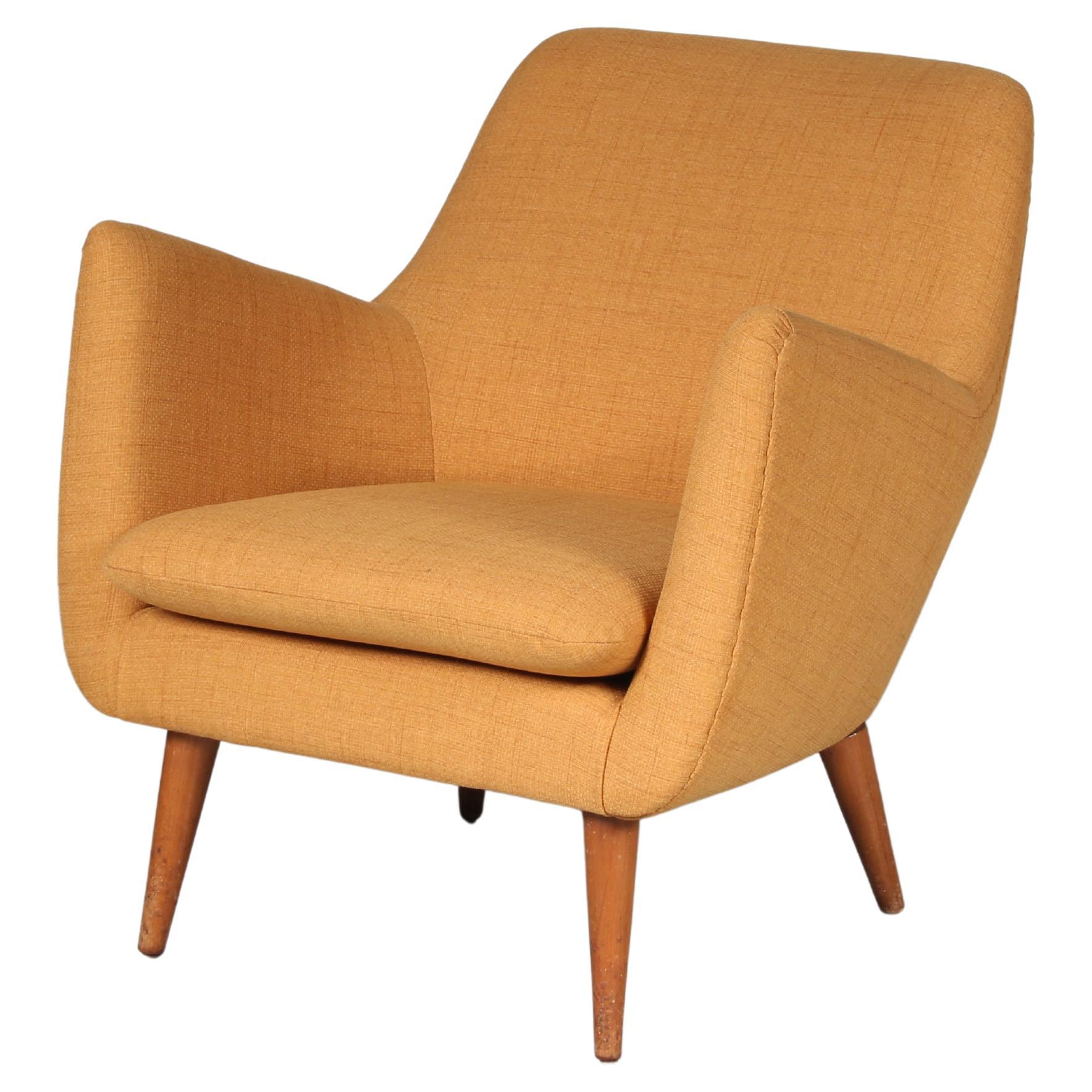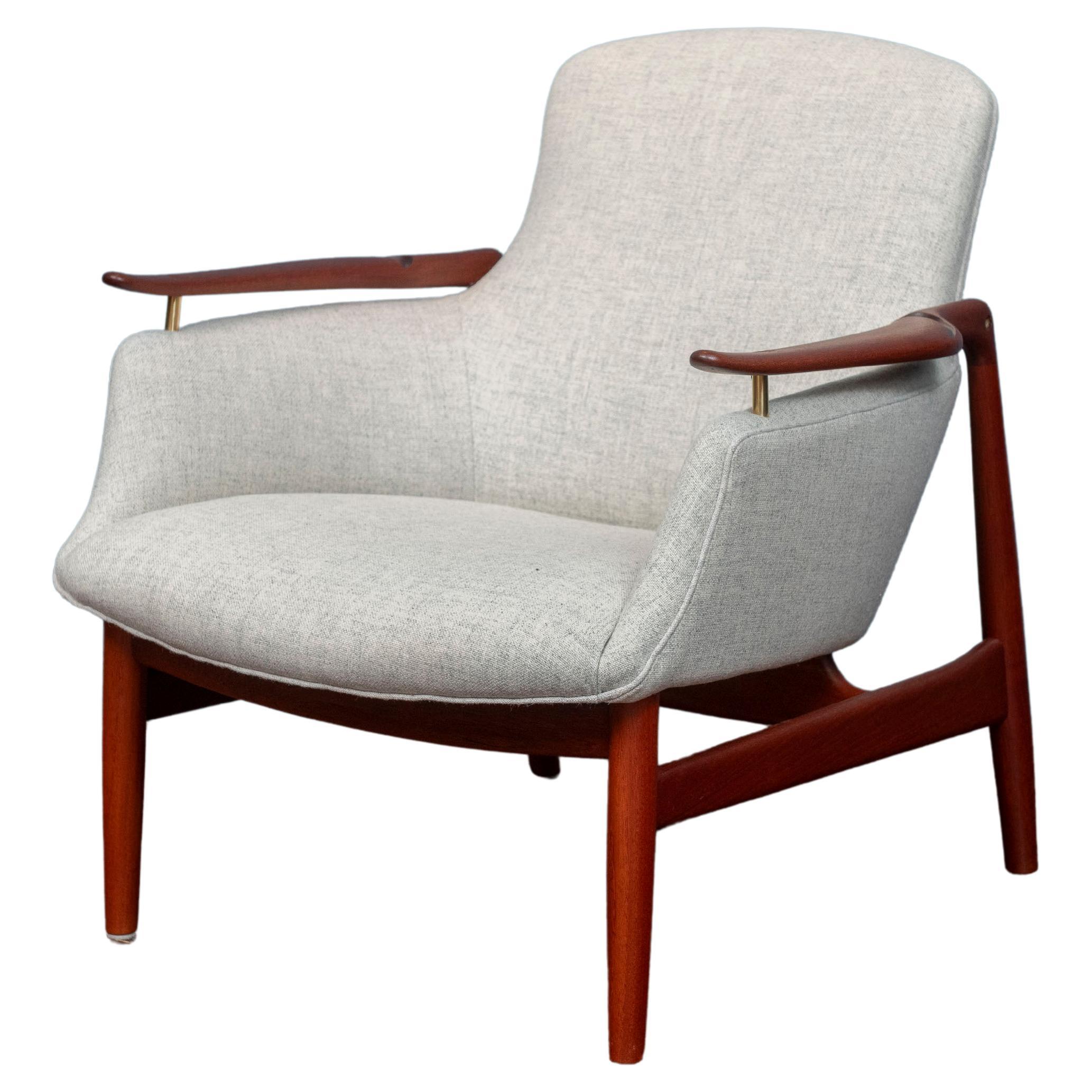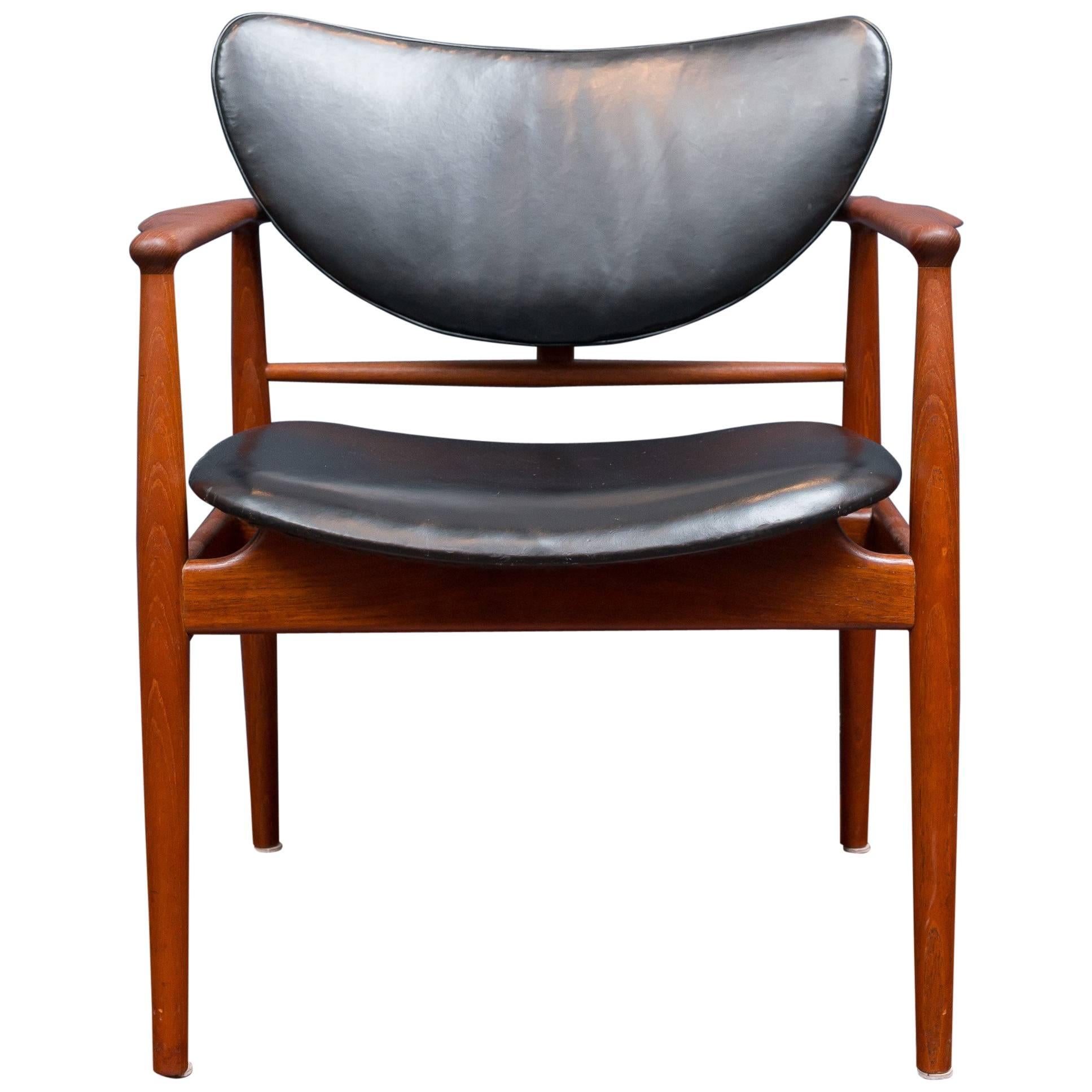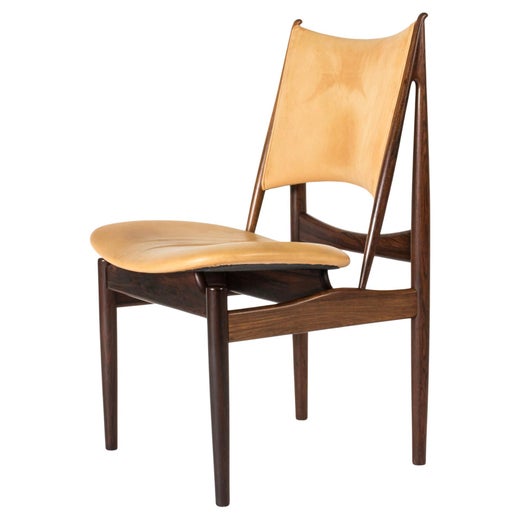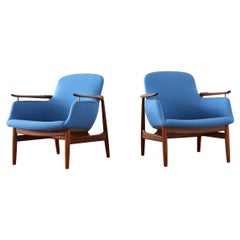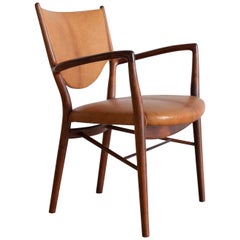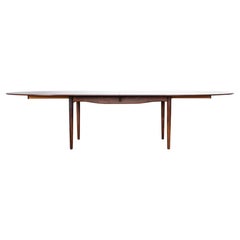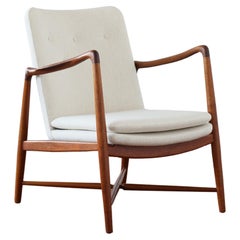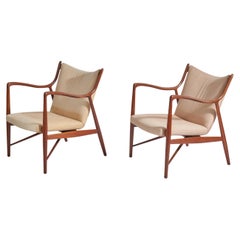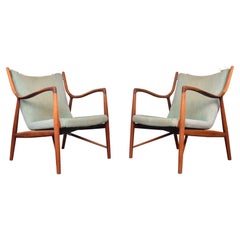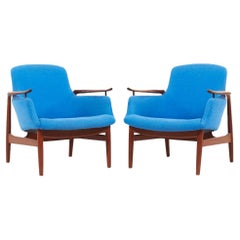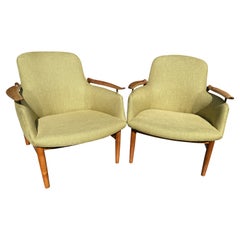
Finn Juhl, a pair of NV45 chairs in Rosewood for Niels Vodder, 1945
View Similar Items
Finn Juhl, a pair of NV45 chairs in Rosewood for Niels Vodder, 1945
About the Item
- Creator:Finn Juhl (Designer),Niels Vodder (Cabinetmaker)
- Dimensions:Height: 32.68 in (83 cm)Width: 26.78 in (68 cm)Depth: 28.35 in (72 cm)Seat Height: 17.33 in (44 cm)
- Style:Scandinavian Modern (Of the Period)
- Materials and Techniques:
- Place of Origin:
- Period:
- Date of Manufacture:1945
- Condition:Reupholstered. Wear consistent with age and use.
- Seller Location:Copenhagen, DK
- Reference Number:1stDibs: LU1008239787772
Finn Juhl
Along with Hans Wegner, Arne Jacobsen and Børge Mogensen, Finn Juhl was one of the great masters of mid-20th-century Danish design. Juhl was the first among that group to have his work promoted overseas, bringing the character of the nation’s furnishings — and the inherent principles of grace, craftsmanship and utility on which they were based — to an international audience.
A stylistic maverick, Juhl embraced expressive, free-flowing shapes in chair, credenzas and sofa designs much earlier than his colleagues, yet even his quietest pieces incorporate supple, curving forms that are at once elegant and ergonomic.
As a young man, Juhl hoped to become an art historian, but his father steered him into a more practical course of study in architecture. He began designing furniture in the late 1930s, a discipline in which, despite his education, Juhl was self-taught, and quite proud of the fact.
Juhl’s earliest works, designed in the late 1930s, are perhaps his most idiosyncratic. The influence of modern art is clear in his 1939 Pelican chair: an almost Surrealist take on the classic wing chair. Critics reviled the piece, however; one said it looked like a "tired walrus." Juhl had tempered his creativity by 1945, when the workshop of Danish cabinetmaker Niels Vodder began to issue his designs. Yet Juhl’s now-classic NV 45 armchair still demonstrates panache, with a seat that floats above the chair’s teak frame.
Juhl first exhibited his work in the United States in 1950, championed by Edgar Kaufmann Jr., an influential design critic and scion of America’s most prominent family of modern architecture and design patrons. (Kaufmann’s father commissioned Frank Lloyd Wright’s design of the house “Fallingwater.”)
Juhl quickly won a following for such signature designs as the supremely comfortable Chieftan lounge chair, the Judas table — a piece ornamented with stylish inlaid silver plaquettes — and the biomorphic Baker sofa. After an article authored by Kaufmann on Juhl and his work appeared in the U.S.-based magazine Interiors in 1948, he began receiving American commissions.
Kaufmann commissioned Juhl to create the exhibition design for, and contribute pieces to, the 1951 edition of the Good Design shows he organized for MoMA and Chicago’s Merchandise Mart. Baker Furniture asked Juhl to design for the firm, and he produced a collection of chairs, tables and cabinets, and, later, the 1957 sofa.
Scandinavian modernist seating, such as the chairs and sofas Juhl created for Baker, became immensely popular in postwar America, as the seeds of the Scandinavian style that Juhl sowed took root and spread in the United States. Juhl and his work featured prominently in the landmark show “Design from Scandinavia,” which opened in 1954 at the Virginia Museum of Fine Arts and traveled to 24 museums in the U.S. and Canada; over three years, it was seen by more than a million people.
Juhl’s furniture — as well as his ceramics, tableware and accessories — has an air of relaxed sophistication and elegance that is unique in the realm of mid-century design.
Find vintage Finn Juhl armchairs, coffee tables, desks and other furniture for sale on 1stDibs.
Niels Vodder
One of the greatest cabinetmakers in Denmark, Niels Vodder had an illustrious career in Danish furniture. And just as like-minded duos Kaare Klint and Rudolph Rasmussen or Hans Wegner and Johannes Hansen had, Vodder — in partnership with Finn Juhl for more than 20 years — set a high standard for Scandinavian modernism.
Vodder had already established his position as an in-demand cabinetmaker by the time Juhl came into his small workshop in 1937. Juhl — a pioneer of 20th-century Danish design and a pivotal figure in the introduction of Danish modern in the United States — had often authored technically complicated designs that other woodworkers found impossible to execute. Vodder, however, would prove otherwise through his skill and ingenuity. Together, the two ushered in an era of innovative Danish design to an international audience at annual Cabinetmakers’ Guild exhibitions in Copenhagen.
Some of Juhl’s most iconic lounge chairs, such as the NV 45 chair and the Chieftain chair, were first built by Vodder. Most of the seating executed by Vodder was done in teak, although some chairs were handcrafted in mahogany, rosewood and other attractive woods. The Chieftain, formally the FJ 49 A, won the Danish Design Award in the “Classic” category, while the NV 45 can be found in the collection of the Museum of Modern Art. Juhl’s FJ 51 chair was featured in the United Nations Trusteeship Council chamber — designing and furnishing the chamber was one of Juhl’s notable accomplishments in the early 1950s.
One of the keys to the pair’s success lay in the combination of Juhl’s self-taught approach and Vodder’s progressive outlook on his trade. The latter's workshop was modest in size and he was a pioneer with respect to the use of subcontractors in manufacturing, while Juhl had no formal training in furniture design. Juhl's early ambition was to pursue art history; instead, at his father’s request, he earned a degree in architecture. His studies and enthusiasm for art resulted in inspired pieces that were free from traditional norms, while Vodder possessed the technical prowess to refine and bring these ideas to fruition.
As Ejnar Pedersen — founder of P.P. Møbler — once said, “ (I)f we had no Niels Vodder, we would not have had the Finn Juhl we know today.” Vodder passed away in 1982.
On 1stDibs, find a collection of vintage Niels Vodder seating, tables and case pieces.
More From This Seller
View AllVintage 1950s Danish Scandinavian Modern Armchairs
Brass
Mid-20th Century Danish Scandinavian Modern Armchairs
Leather, Rosewood
Mid-20th Century Danish Scandinavian Modern Dining Room Tables
Beech, Rosewood
Vintage 1940s Danish Scandinavian Modern Lounge Chairs
Fabric, Teak
Vintage 1940s Danish Scandinavian Modern Sofas
Fabric, Beech
Mid-20th Century Danish Scandinavian Modern Lounge Chairs
Steel
You May Also Like
Vintage 1940s Danish Scandinavian Modern Lounge Chairs
Teak, Fabric
Mid-20th Century Danish Mid-Century Modern Lounge Chairs
Teak
Vintage 1970s Danish Mid-Century Modern Lounge Chairs
Upholstery, Wood
Vintage 1950s Danish Scandinavian Modern Lounge Chairs
Brass
Vintage 1950s Danish Mid-Century Modern Settees
Wool, Teak
Vintage 1950s Danish Mid-Century Modern Lounge Chairs
Brass
